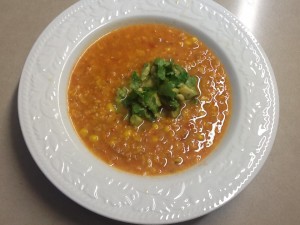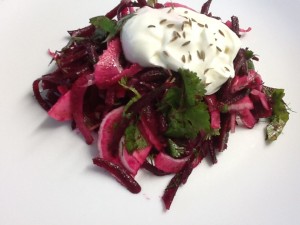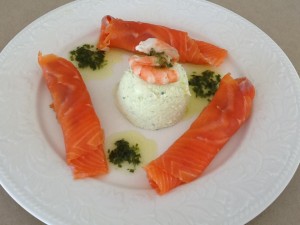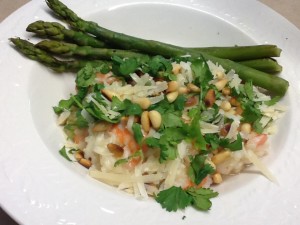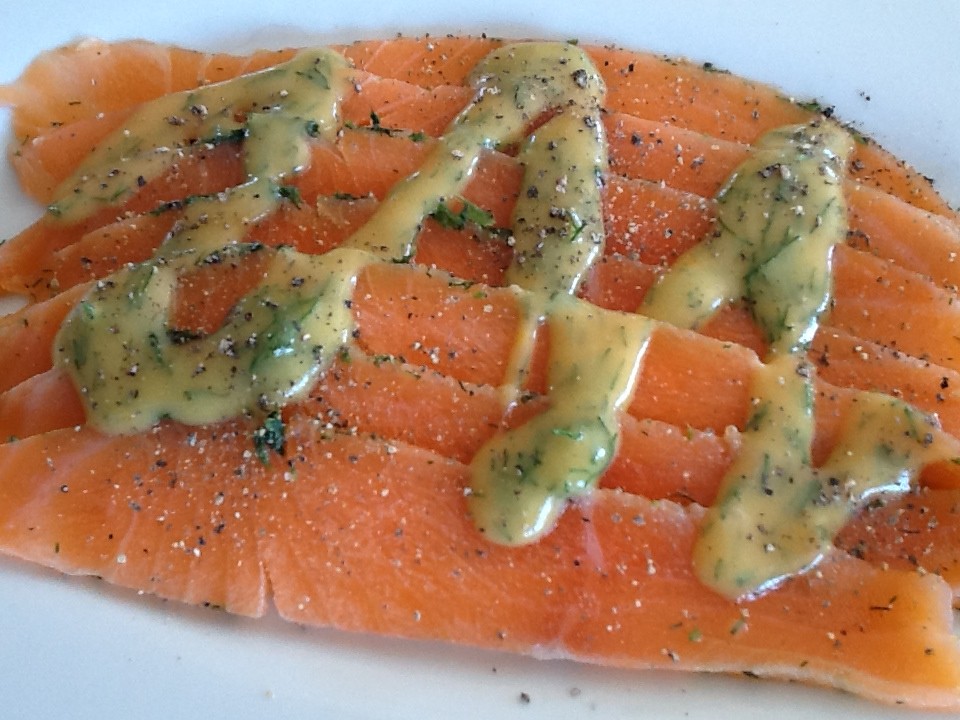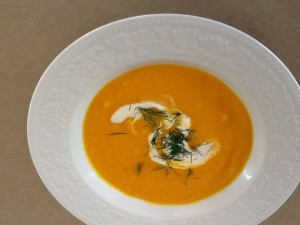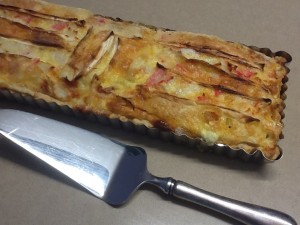This recipe has evolved over many years, with slight adjustments and more recently with the addition of the nuts and figs.While they are optional I think the sweetness and crunch contrast beautifully with the silky smoothness of this savoury pâté. In fact it’s so smooth it’s almost like foie gras. As you can see in the photo I usually serve some extra figs and nuts in small bowls.
You can use any mold or dish for this pâté and it doesn’t have to be turned out. I have a triangular metal mold which is perfect. The pâté doesn’t fill it, but it doesn’t matter. If you prefer, use two smaller molds or small dishes.
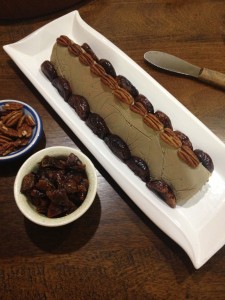 500g chicken livers, trimmed and rinsed
500g chicken livers, trimmed and rinsed
1 large onion, peeled and chopped
1 clove garlic, crushed
2 tsp dried thyme or 4 tsp fresh
250g butter
2 Tbs brandy or cognac
Salt and pepper to taste
To garnish:
250g dried figs (choose soft plump ones)
About 1 cup red wine
1 cup walnut or pecan halves
To serve:
French bread stick, thinly sliced and toasted
Or crackers
Line a mold with plastic wrap. If it’s a bit wrinkled it doesn’t matter. Heat 50g of the butter in a frying pan and cook onion and garlic gently until soft, stirring often. Dry chicken livers on paper towels. Add to pan with thyme, turn up the heat and continue to stir fry for 3-5 minutes until chicken livers are browned but still a bit pink inside.
Tip contents of frying pan into food processor with the brandy and purée till smooth, adding remaining butter in pieces, a few at a time and stopping to scrape down the sides from time to time. Push paté through a metal sieve, discarding any which won’t pass through. This is not essential but results in a much smoother paté . Season to taste then scrape into mold and smooth the top. When cool, cover with overhang of plastic wrap and refrigerate overnight.
Trim stalks from figs, place in a saucepan and cover with red wine. Bring wine to the boil and simmer until liquid has cooked away and figs are glazed. Stir often towards the end to prevent sticking or burning. Remove figs and cool on non-stick paper overnight. Toast nuts by stirring over moderate heat in a dry frying pan for a minute or so.
To serve, unmold pâté onto a serving dish. Decorate with the nuts and figs. Serve with the toast or crackers.
Serves 12 or more

